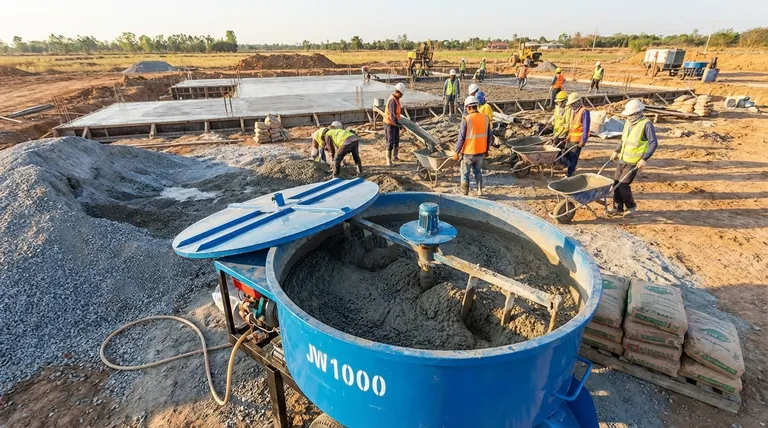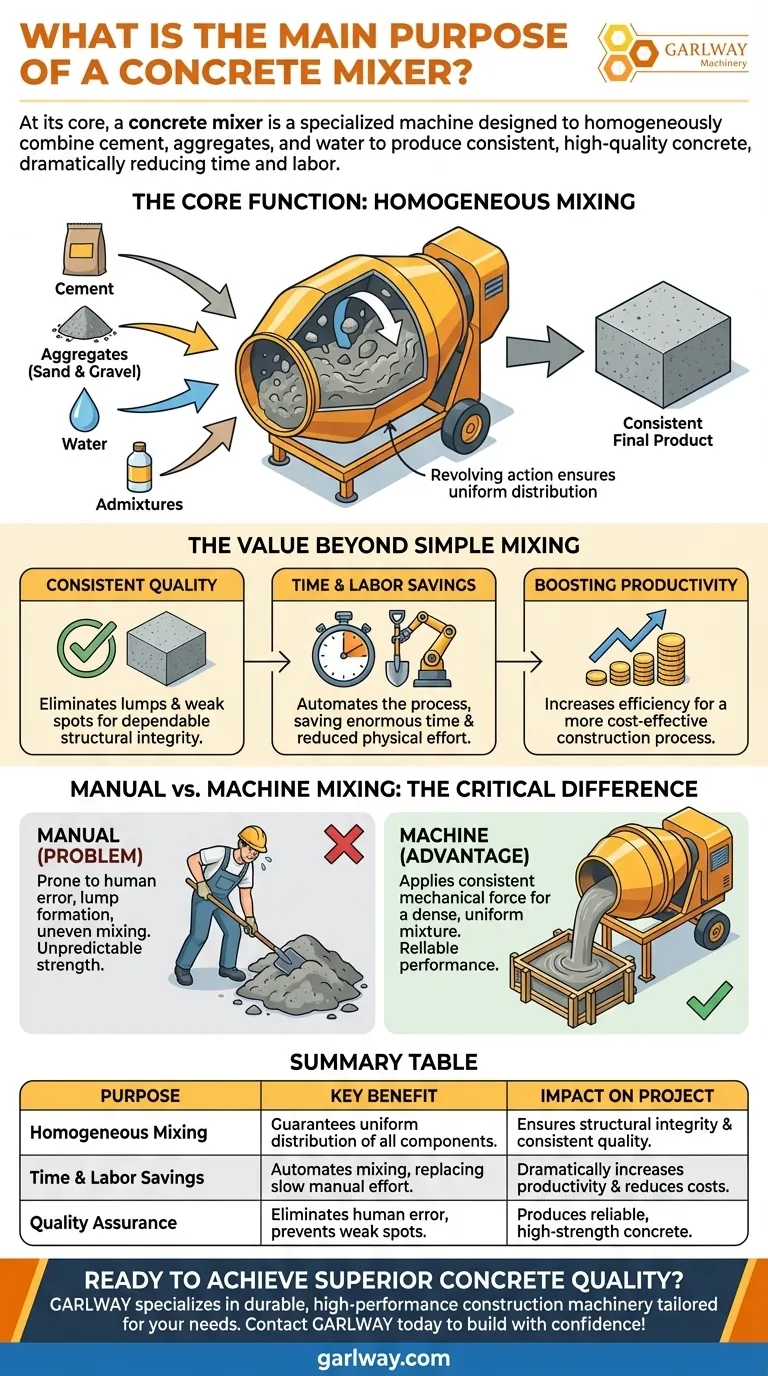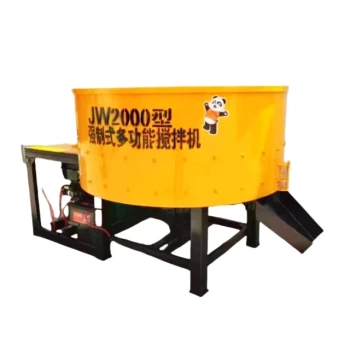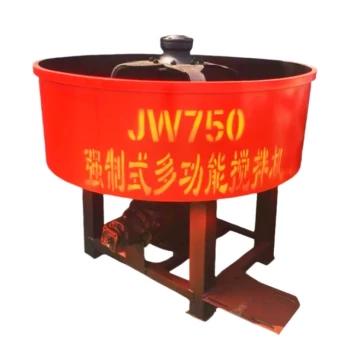At its core, a concrete mixer is a specialized machine designed to homogeneously combine cement, aggregates like sand or gravel, and water to produce concrete. It uses a revolving drum to ensure all components are thoroughly and evenly distributed, creating a consistent final product.
The true purpose of a concrete mixer isn't just to mix ingredients, but to guarantee the quality, consistency, and strength of the concrete while dramatically reducing the time and labor required compared to manual methods.

The Core Function: Creating Homogeneous Concrete
A mixer's primary job is to create a mixture that is perfectly uniform. This uniformity is the foundation of strong, reliable concrete.
The Key Ingredients
A concrete mixer is built to handle the essential components of concrete. These include cement, aggregates (such as sand and gravel), and water. Sometimes, chemical admixtures are also added to modify the concrete's properties.
The Importance of Homogeneous Mixing
Homogeneous mixing means that every scoop of the concrete has the exact same composition. The revolving drum action continuously lifts and tumbles the materials, ensuring no clumps of dry cement remain and that the water is evenly absorbed by all the aggregates.
The Value Beyond Simple Mixing
While its function is mixing, the true value of a concrete mixer lies in the efficiency and quality it brings to a construction project. It solves the critical problems associated with manual mixing.
Ensuring Consistent Quality
Manually mixing concrete often results in an inconsistent blend with weak spots or lumps. A mixer eliminates this risk, providing a dependable, high-quality mixture every time, which is crucial for the structural integrity of the final product.
Drastic Time and Labor Savings
Mixing concrete by hand is a slow and physically demanding process. A concrete mixer automates this task, saving enormous amounts of time and reducing the physical effort required from workers.
Boosting Productivity and Cost-Effectiveness
By saving time and labor, a mixer directly increases worker productivity. This efficiency translates into a more cost-effective construction process, allowing projects to move forward faster and with fewer resources dedicated to a single task.
Manual vs. Machine Mixing: The Critical Differences
Understanding why a machine is superior to manual methods highlights its essential role in modern construction. The difference comes down to consistency and power.
The Problem with Manual Methods
Manual mixing is prone to human error. It's difficult to achieve a truly homogeneous mix, often resulting in lump formation and uneven water distribution. This leads to a final product with unpredictable strength.
The Advantage of Mechanical Force
A concrete mixer applies consistent, powerful mechanical force to the components. This ensures that every particle is coated in cement paste, creating a dense and uniform mixture that human effort simply cannot replicate on a large scale. The machine's durable construction is designed for reliable, long-term performance.
Making the Right Choice for Your Project
The decision to use a mixer is fundamentally about ensuring quality and efficiency for the task at hand.
- If your primary focus is any structural application or large-volume pour: A concrete mixer is non-negotiable to guarantee consistent quality, strength, and project efficiency.
- If your primary focus is a very small, non-structural patch repair: While manual mixing is possible, a small mixer will still produce a more reliable and durable result with less effort.
Ultimately, a concrete mixer transforms essential ingredients into the strong, reliable building material that modern construction depends on.
Summary Table:
| Purpose | Key Benefit | Impact on Project |
|---|---|---|
| Homogeneous Mixing | Guarantees uniform distribution of cement, aggregates, and water. | Ensures structural integrity and consistent quality of the final concrete. |
| Time & Labor Savings | Automates the mixing process, replacing slow, manual effort. | Dramatically increases productivity and reduces project costs. |
| Quality Assurance | Eliminates human error and prevents weak spots or lumps. | Produces reliable, high-strength concrete essential for any structural application. |
Ready to achieve superior concrete quality and boost your project's efficiency?
GARLWAY specializes in providing durable and high-performance construction machinery, including concrete mixers, winches, and batching plants, tailored for construction companies and contractors worldwide. Our equipment is engineered to deliver the consistent, homogeneous mixing your projects demand, saving you time and labor costs.
Contact GARLWAY today to find the perfect concrete solution for your needs and build with confidence!
Visual Guide

Related Products
- Ready Mixer Machine for Construction Ready Mix Machinery
- Commercial Construction Mixer Machine for Soil Cement Mixing Concrete
- Auto Concrete Cement Mixer Machine New
- HZS90 Large Multiquip Concrete Mixers for Construction
- JDC350 Small Cement Concrete Mortar Mixer
People Also Ask
- What should be considered regarding the output of a concrete mixer? Match Capacity to Your Project Scale
- What was significant about Roscoe Lee's 1934 concrete mixer design? Pioneering Modular Construction Equipment
- When was the first concrete mixer developed and by whom? Discover the 1900 Breakthrough
- Which type of projects require a concrete mixer? Essential Guide for Construction Pros
- What is the average lifespan of a concrete mixer? Maximize Your Equipment's Lifespan & ROI



















